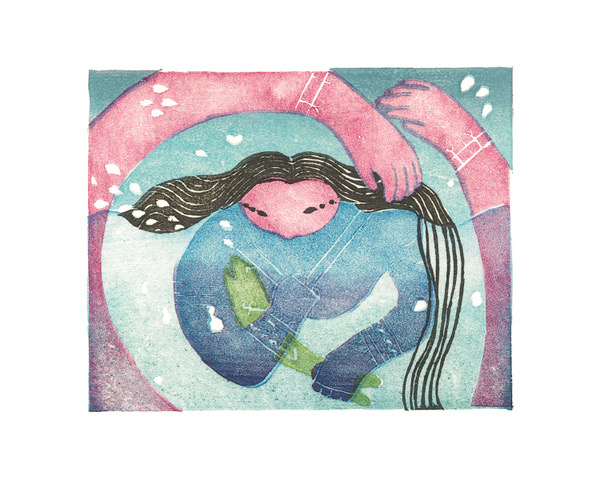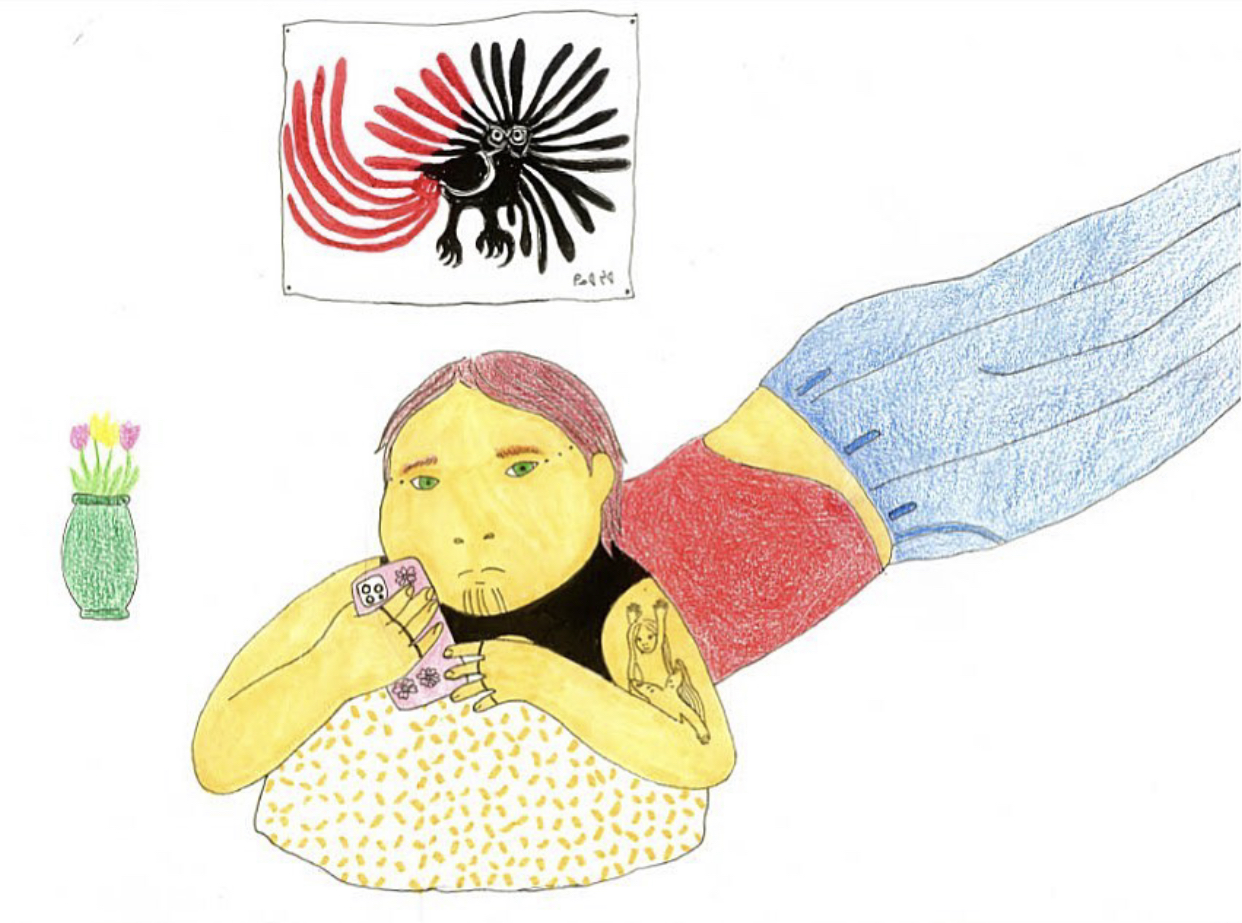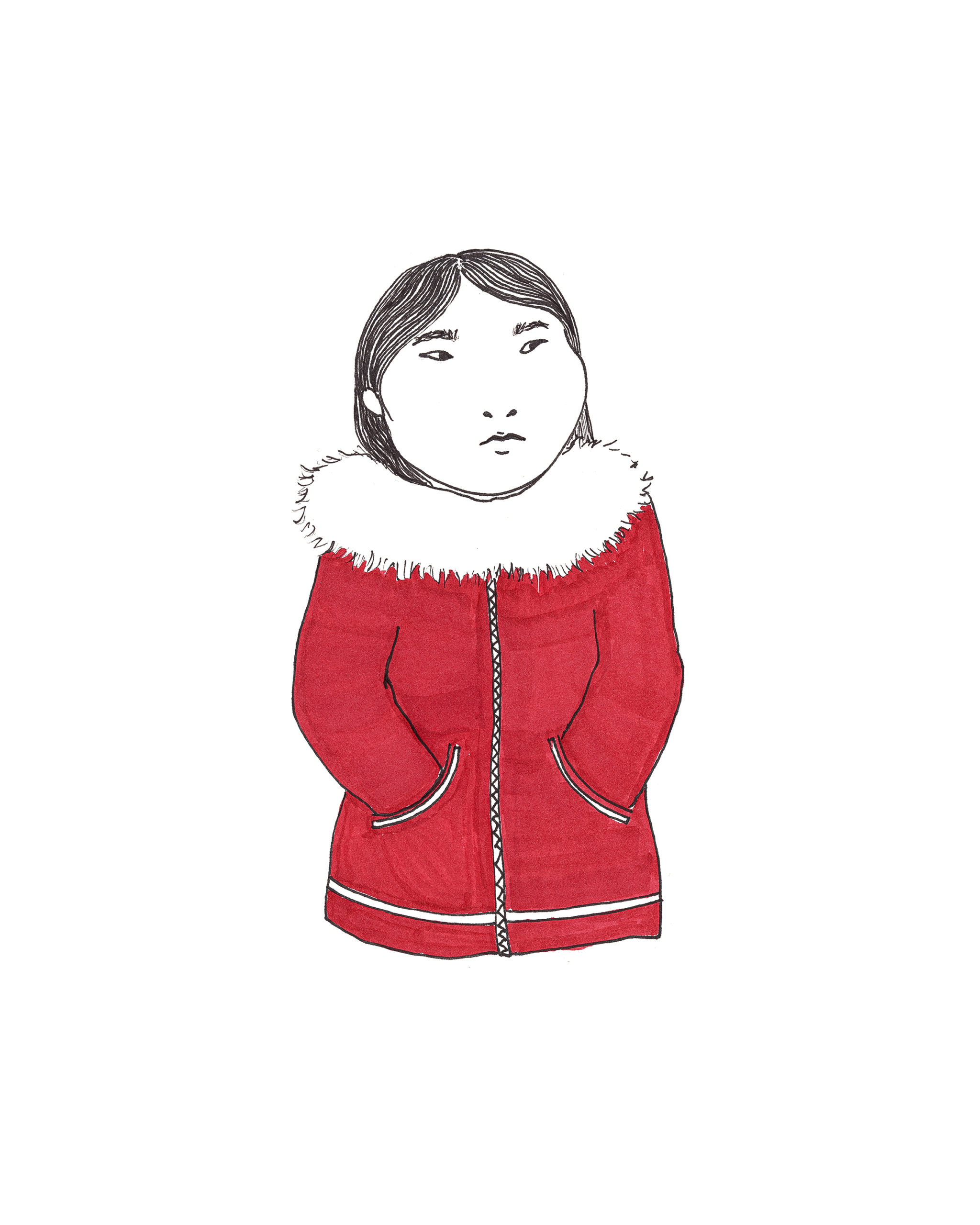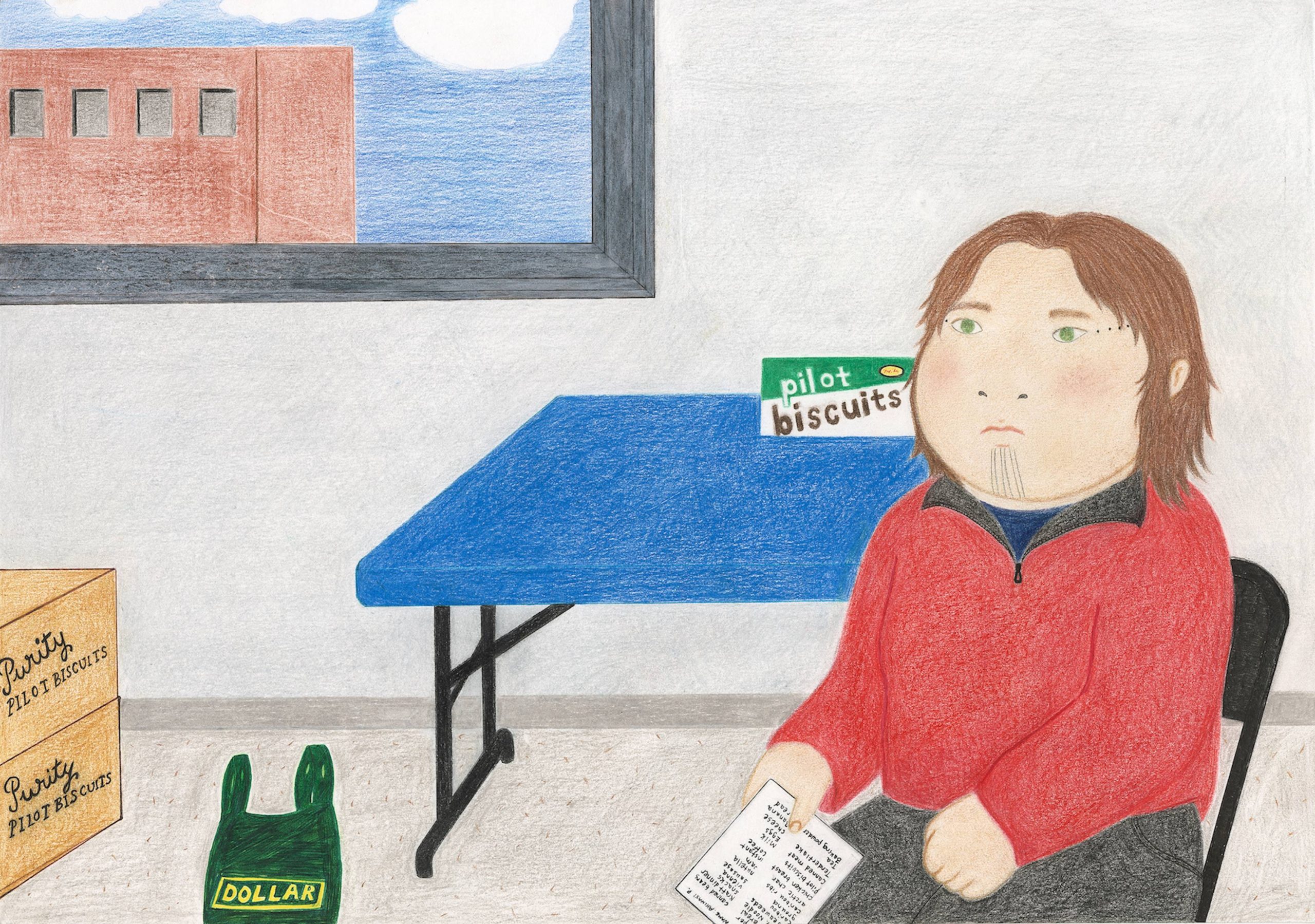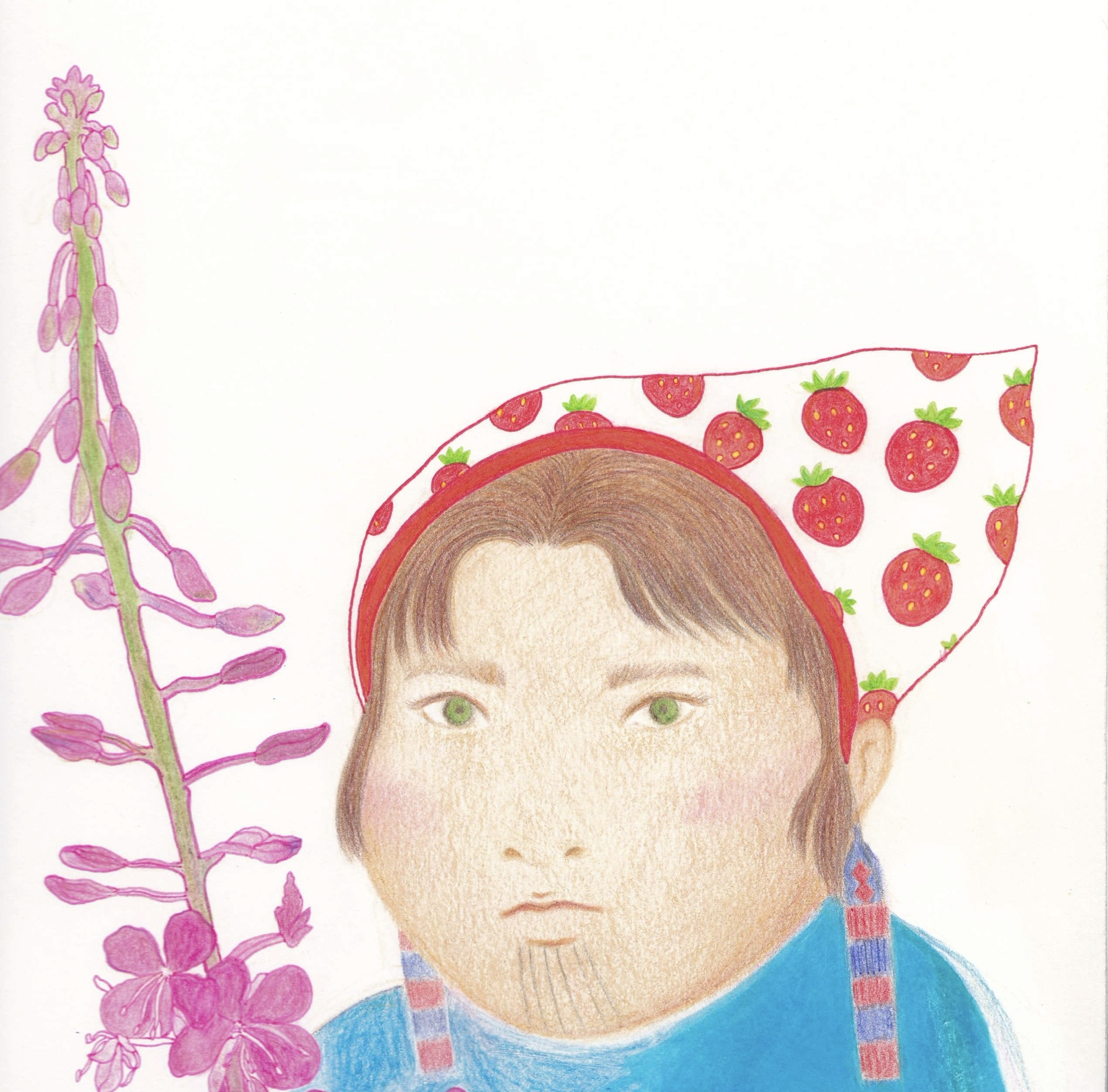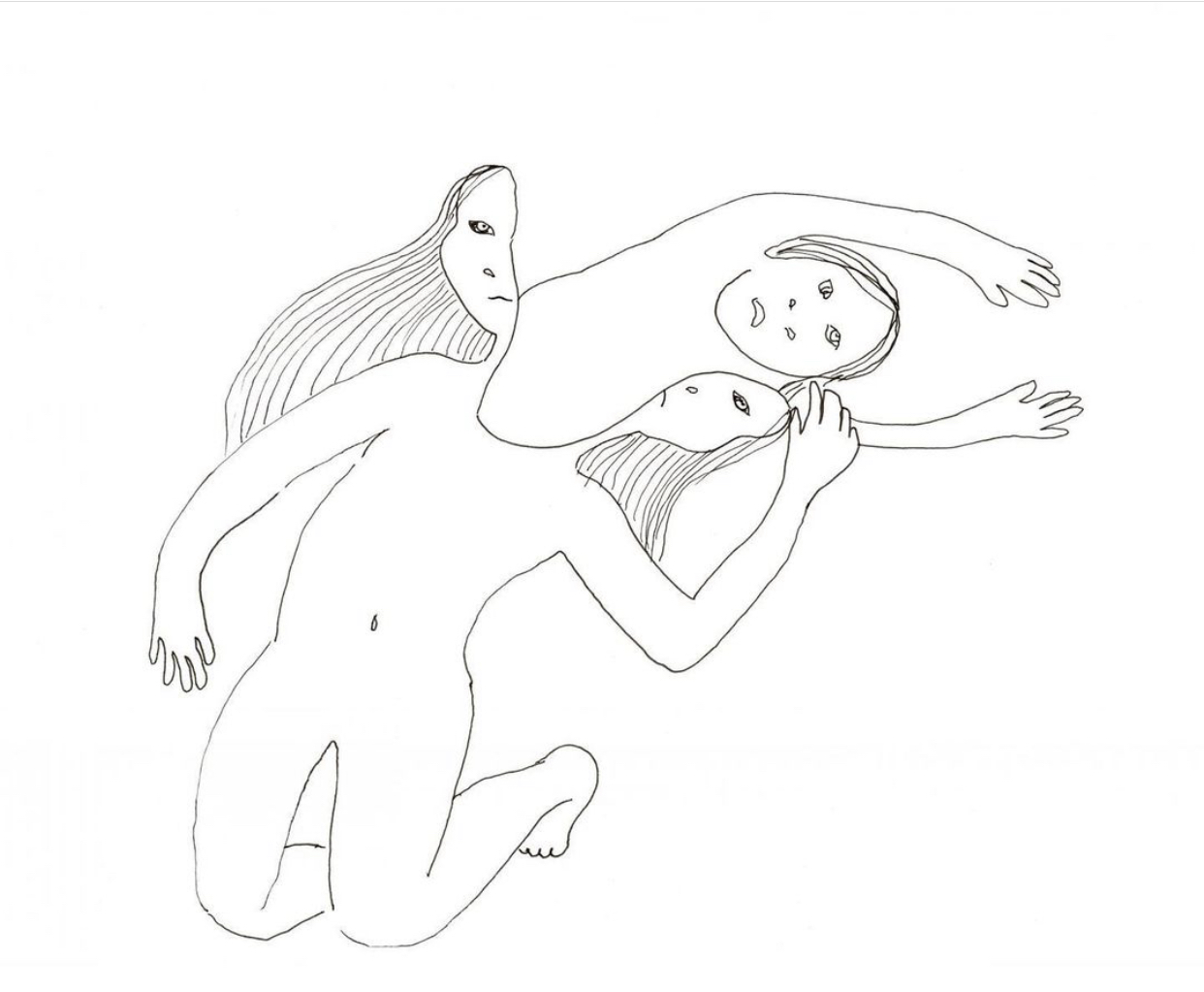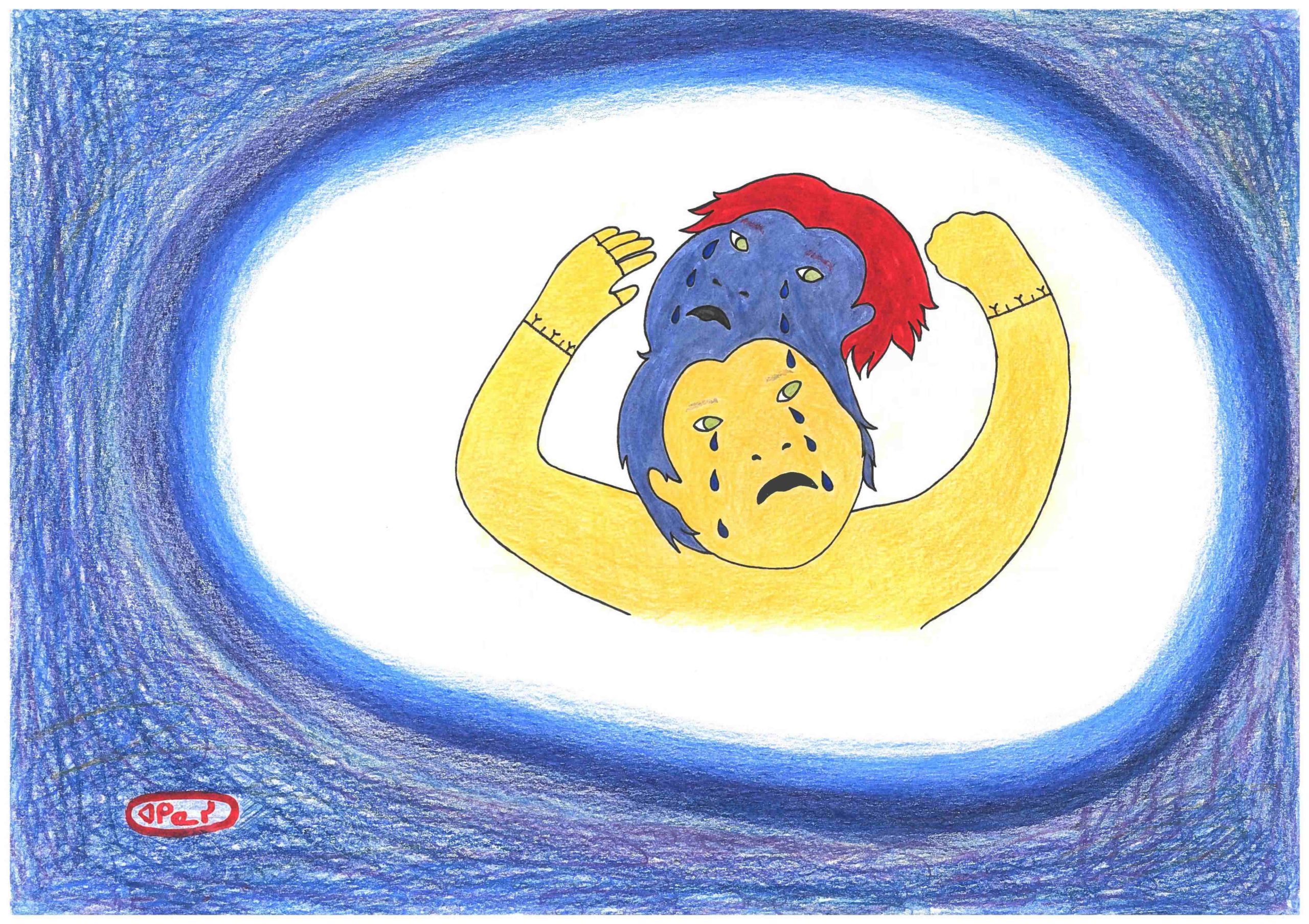ᐊᑭᓇᓯ ᐸᑐᕆᑦᔅ|Akinasi Partridge
ᐊᑭᓇᓯ ᐸᑐᕆᑦᔅ ᑰᑦᔪᐊᒥᐅᕕᓂᖅ, ᒪᓐᑐᔨᐊᓚᒥ ᐱᕈᕐᓴᓯᒪᑦᓱᓂ. ᐸᓂᒋᔭᐅᔪᖅ ᑕᕐᕋᓕᒃ ᐸᑐᕆᑦᔅᒧᑦ ᐊᒻᒪᓗ ᐸᓂᖕᖑᐊᕆᔭᐅᑦᓱᓂ ᓂᓪᓭᓗ ᐊᑉᓯᒧᑦ, ᓵᒥᒧᑦ ᓄᐊᕗᐃᒥᐅᒧᑦ. ᐊᓪᓚᖑᐊᓲᖅ ᐊᒻᒪᓗ ᐸᑦᑎᑎᒐᓕᐅᕐᓱᓂ ᐱᒻᒪᕆᖕᖑᐸᓪᓕᐊᒍᑎᒋᓯᒪᑦᓱᒋᒃ 24-ᓂ ᐅᑭᐅᖃᓕᕐᓱᓂ. ᑕᒪᖏᒃ ᐊᖓᔪᕐᖄᖏᒃ ᐱᒋᐅᕐᓴᓂᖓᓂᒃ ᑫᓪᓗᑐᐃᖃᑦᑕᓯᒪᔫᒃ. ᐊᓈᓇᖓ ᑕᑯᒥᓇᕐᑐᓕᐅᕐᑎᐅᒥᔪᖅ ᐊᒻᒪᓗ ᓂᓪᓭᓗ, 2D-ᓂᒃ ᓂᒪᖕᖑᐊᑐᓕᐅᕐᑎᐅᓱᓂ ᑕᑯᓐᓇᕋᑦᓴᓂᒃ, ᐃᑲᔪᕐᓯᓯᒪᒍᓐᓇᓯᒪᔫᒃ ᐊᒻᒪᓗ ᐊᔪᕿᒋᐊᕐᐸᓱᒍ. ᑐᑭᓯᑎᑦᓯᓚᐅᕐᑐᖅ: “ᐃᓘᓐᓇᑕ ᐅᓂᒃᑳᑎᓂᒃ ᑐᓴᕐᑎᓯᓲᒍᔪᒍᑦ ᓯᓚᕐᔪᐊᒦᖃᑎᑦᑎᓂᒃ.”
ᐅᕕᒃᑲᖅ ᑕᑯᒥᓇᕐᑐᓕᐅᕐᑎ ᐊᓕᐊᒋᔭᖃᕐᐸᓕᐊᓯᓯᒪᔪᖅ ᐊᓪᓚᖑᐊᕆᐊᒥᒃ ᐱᕈᕐᓴᓱᓂ ᐊᓕᐊᓀᑦᑐᖑᐊᓂᒃ ᑕᑯᓐᓇᖃᑦᑕᑐᕕᓂᐅᑦᓱᓂ, ᐊᒻᒪᓗ mangas-ᓂᒃ ᐊᑐᐊᕐᓯᐸᑦᓱᓂ. ᐱᒍᒪᔭᖃᕐᓯᒪᔪᖅ ᓯᕗᓂᕐᒥ mangaka-ᖕᖑᕋᒪᑦᓱᓂ, manga ᐊᑐᐊᒐᓕᐅᕐᑎᐅᓗᓂ. ᓇᒧᖕᖓᕆᐊᑕᒫᑦ ᐊᑦᔭᓯᖃᑦᑕᓕᕐᑐᕕᓂᖅ ᐊᓪᓚᖑᐊᕐᕕᓂᒃ. ᐊᓯᒥᓄᑦ ᑲᒃᑲᓛᓄᑦ ᐊᓪᓚᖑᐊᕈᑦᔭᐅᒍᒪᔪᓄᑦ ᕿᓄᕕᐅᕙᓕᕐᓱᓂ. ᐊᓪᓚᖑᐊᕈᓐᓀᓯᒪᔪᖅ ᐊᕐᕌᒍᓂ 7-ᓂᑦ 8-ᓄᑦ, ᐳᕐᑐᓂᕐᓴᓂ ᐃᓕᓴᕐᓱᓂ, ᐃᓱᒪᒃᑯᑦ ᐃᑉᐱᒍᓱᒍᐊᕐᓂᓴᐅᓂᕐᒥᓂ.
ᑭᖑᓂᖓᒍᑦ, ᐊᑭᓇᓯ ᐃᓕᓵᒍᓯᔪᕕᓂᖅ John Abbott College-ᒥ ᑕᕐᖀᑦ ᐃᓕᓴᕐᓀᑦ ᓯᕗᓪᓕᐹᖏᓐᓂ ᑌᒪ ᓅᓐᓂᐊᓕᕋᒥ Dawson College-ᒧᑦ, ᕿᒥᕐᕈᕋᑦᓴᓂᒃ ᐊᓪᓚᖑᐊᕆᐅᕐᓴᓯᑦᓱᓂ, ᐃᓕᓴᕐᑕᒥᓂᒃ ᐱᔭᕇᕐᓱᓂ. ᑳᓕᑦᔅᒥ ᐃᓕᓴᕐᓱᓂ ᐱᔭᕐᓃᓘᖃᑦᑕᓯᒪᔪᖅ ᐱᕐᖃᔭᑦᓯᐊᖏᑦᑑᔪᕆᑦᓱᓂ ᓄᓇᖃᕐᖄᑐᕕᓂᐅᓂᕐᒥᓄᑦ; ᐃᒻᒥᓂᒃ ᐃᑉᐱᒍᓱᓗᐊᖃᑦᑕᑐᕕᓂᖅ. ᒐᓗᐊᕐᓱᓂ, ᐊᓪᓚᖑᐊᑲᑦᑕᕆᐊᓪᓚᓯᔪᕕᓂᖅ ᐅᑭᐅᖃᓕᕐᓱᓂ 24-ᓂᒃ, ᐊᒻᒪᓗ ᐊᓪᓚᖑᐊᕐᑕᕕᓂᕐᒥᓂᒃ ᓄᐃᑦᓯᖃᑦᑕᓕᕐᓱᓂ ᖃᕆᑕᐅᔭᑎᒍᑦ. ᐊᓕᐊᒋᔭᐅᖃᑦᑕᑐᕕᓃᑦ ᐊᓪᓚᖑᐊᕐᑕᕕᓂᖏᑦ, ᑌᒪ ᐃᓕᐅᕐᙯᖃᑦᑕᕈᒪᓯᔪᕕᓂᖅ ᑲᑎᕐᓱᐊᖃᐅᑎᒥᓄᑦ ᐱᓇᓱᐊᕐᓯᒪᔭᒥᓂᒃ. ᑕᒐᑕᒐ, ᐊᓕᐊᒋᔭᖃᓕᕐᑐᖅ ᐃᓗᒡᒍᓯᒥᓂᒃ ᐊᒻᒪᓗ ᐱᕈᕐᐸᓕᐊᓂᖃᓕᕐᓱᓂ ᐱᔪᓐᓇᓂᖃᑦᓯᐊᕆᐊᒥᒃ ᐃᑉᐱᒍᓱᓕᕐᓱᓂ, ᐅᓄᕐᓂᓴᓄᓪᓗ ᐊᓪᓚᖑᐊᕐᑕᕕᓂᖏᑦ ᑕᑯᔭᐅᒍᓐᓇᐸᓕᕐᓱᑎᒃ. ᓚᓚᐅᕐᑐᖅ: “ᐱᓇᓱᐊᕐᑕᑲ ᐃᓗᒡᒍᓯᕐᓅᕙᖓ ᑕᑯᒥᓇᕐᓂᓴᐅᒍᑎᖃᓲᑦ; ᐅᓂᒃᑲᐅᓯᕋ ᑐᓴᕐᑕᐅᖁᑦᓱᒍ. ᐅᕙᓐᓄᑦ ᐱᒻᒪᕆᖕᖑᓯᒪᔪᖅ, ᐊᒻᒪᓗ ᓱᓇᓕᐅᕈᒪᒻᒪᖔᒻᒪ ᖃᐅᔨᒪᑦᓯᐊᓂᕐᓴᐅᓲᒍᓕᕐᓱᖓ.” ᐱᕙᓪᓕᐊᑎᑦᓯᓯᐊᓯᔪᕕᓂᖅ ᓇᒻᒥᓂᖅ ᓄᐃᑎᕆᒍᓯᒥᑎᒍᑦ ᐊᒻᒪᓗ ᐱᓇᓱᐊᕐᓯᒪᔭᖏᑦ ᐊᑦᔨᖃᕋᑎᒃ.
ᐊᑐᓲᖅ ᐊᓪᓚᐅᑎᑐᐃᓐᓇᓂᒃ, ᐊᓪᓚᐅᑎᓂᒃ ᐃᒪᓕᓐᓂᒃ, ᐊᒻᒪᓗ ᒪᑦᑎᑎᒐᓕᐅᕈᑎᓂᒃ ᑕᑯᒥᓇᕐᑐᓕᐅᕈᑎᒋᑦᓱᒋᑦ, ᑌᒣᑦᑐᐃᑦ ᐊᑐᐃᓐᓇᐅᓂᕐᓴᐅᓲᒍᒻᒪᑕ, ᐊᒻᒪᓗ ᓇᓂᓕᒫᖅ ᓂᐅᕕᐊᒍᒍᓐᓇᓱᑎᒃ. ᐊᓕᐊᒋᑦᓱᒋᓪᓗ ᐊᒡᒐᒥᓄᑦ ᐊᓪᓚᖑᐊᕐᓯᒪᔪᑦ ᐱᐅᓂᕐᓴᐅᓲᒍᒻᒪᑕ ᐊᒻᒪᓗ ᐃᑉᐱᒋᔭᖃᕐᑎᓯᓂᕐᓴᐅᓲᒍᑦᓱᑎᒃ. ᑕᑯᑦᓱᒋᑦ ᐊᓪᓚᐅᑎᑐᐃᓐᓇᒧᑦ ᐊᓪᓚᖑᐊᕐᑕᕕᓂᖏᑦ ᐅᓄᕐᓂᐸᐅᕗᑦ ᐃᒻᒥᓂᖕᖑᐊᖅ ᑕᑯᑦᓴᐅᑎᑦᓯᒍᑎᖏᑦ ᐊᒻᒪᓗ ᐅᓪᓗᑕᒫᑦ ᐃᓅᓯᕐᒥᓂ ᓱᓇᓱᐊᕐᐸᓂᖏᑦ. ᐊᓯᖓᑎᒍᓪᓗ ᐸᑦᑎᑎᒐᓕᐊᕆᓯᒪᔭᖏᑦ ᐃᓱᒪᖕᖑᐊᑐᐃᓐᓇᓂᒃ ᓄᐃᑕᑎᑦᓯᔪᑦ ᐃᓚᖃᕐᓱᑎᒃ ᑕᕐᓂᖑᐊᓂᒃ ᐊᒻᒪᓗ ᑯᑎᖕᖑᐊᓂᒃ.
ᖃᒻᒥᐅᓂᕐᓴᑯᑦ ᐸᑦᑎᑎᒐᓕᐅᕆᐅᕐᓯᒪᔪᖅ. ᔭᓄᐊᔨ 2023-ᒥ, ᐱᓚᐅᕐᓯᒪᔪᖅ ᐃᓄᐃᑦ ᑕᑯᒥᓇᕐᑐᓕᐅᕐᑏᑦ ᑐᖕᖓᕕᖓᑕ ᐃᓂᖃᕐᕕᒥᑦ ᑐᓂᕐᕈᓯᐊᒥᓂᒃ. ᑕᕝᕙᓂᑦᓭᓇᖅ ᐊᕐᕌᒍᒥ, ᐅᑭᐊᒍᑎᓗᒍ, ᐃᓕᓴᕈᓐᓇᓯᓯᒪᔪᖅ ᓇᑎᑦᓴᔭᓂᒃ ᐃᓗᕐᓴᓕᐊᕆᓯᒪᔪᓂᒃ ᐊᓪᓚᖑᐊᕐᕕᖃᕐᓂᒥᒃ ᖃᕆᑕᐅᔭᒃᑯᑦ ᐃᓕᓴᕐᓱᓂ ᒪᓂᔭᐅᓯᒪᔪᓂᒃ ᐅᑯᓄᖓ N’ we Jinan Creative Studios, ᑖᒃᑯᓄᖓ ᐊᑐᕋᑦᓴᖏᑦ ᐊᑭᓕᕐᑕᐅᑎᓗᒋᑦ, ᐃᑲᔪᕐᓯᔭᐅᓯᒪᔪᖅ ᐱᓯᑎᖕᖑᓕᐅᒥᓂᕐᒥᑎᒍᑦ ᐊᒻᒪᓗ ᐃᓄᑐᖃᕐᓄᑦ ᐃᓕᑦᓯᓕᐅᒥᑎᑕᐅᓯᒪᑦᓱᓂ. ᔪᓂᐅᓚᐅᔫᒥ, ᐃᑲᔪᕐᑕᐅᓱᓂ ᐊᕙᑕᒃᑯᒃ ᑕᑯᒥᓇᕐᑐᓕᐅᕐᓂᒧᑦ ᐁᑦᑑᑎᑦᓴᔭᖏᓐᓂᒃ, ᐃᓕᓴᕆᐊᕐᕕᖃᕐᓯᒪᔪᖅ ᔭᐹᓐᒥ ᕿᔪᓐᓂᒃ ᐃᓗᐃᒃᑲᓂᒃ ᓴᓇᖕᖑᐊᓂᕐᒥᒃ. ᐱᒐᓱᐊᒻᒪᕆᐅᑎᖃᕐᓂᓴᐅᓯᔪᕕᓂᖅ ᐊᒻᒪᓗ ᐱᔪᑦᓴᐅᔮᕈᑎᖃᕐᓂᓴᐅᓯᑦᓱᓂ ᓇᒻᒥᓂᕐᒥᓂᑦ ᐱᔪᓂᒃ, ᑭᓯᐊᓂ ᐅᐱᒪᓪᓚᕆᑦᑐᖅ ᐱᒋᐅᕐᓯᒪᓕᕐᓂᒥᓂᒃ. ᑐᖓᓕᐊ ᑐᕌᒐᖓ ᓇᒻᒥᓂᕐᑖᕈᒪᑦᓱᓂ manga-ᒥᒃ, ᐃᓅᓯᕐᒥᓄᑦ ᓇᒻᒥᓂᖅ ᐱᔪᑦᓴᐅᔮᕈᑎᑖᕐᓯᒪᑦᓱᓂ.
Akinasi Partridge est originaire de Kuujjuaq, bien qu’elle ait grandi à Montréal. Elle est la fille de Taqralik Partridge et la belle-fille de Nilsailu Upsi, un Sámi de Norvège. Elle crée des dessins et des estampes de manière plus professionnelle depuis l’âge de 24 ans. Ces deux parents l’ont beaucoup encouragé à développer sa créativité. Sa mère étant elle-même une artiste, et Nilsailu un animateur, ils ont pu la supporter et lui donner des conseils. Elle explique : « Chacun de nous partageons notre histoire avec le monde. »
La jeune artiste a commencé à développer son intérêt pour le dessin avec les dessins animés de son enfance et les mangas qu’elle lisait. Son rêve était de devenir mangaka, une autrice de manga. Elle apportait un cahier de dessins partout où elle allait. Les autres enfants ont commencé à lui demander qu’elle leur fasse des gribouillis. Mais elle a arrêté le dessin pendant environ 7-8 ans au secondaire, à une période où elle était plus fragile émotionnellement.
Akinasi a étudié à John Abbott pendant un trimestre pour ensuite aller à Dawson, au programme d’arts visuels. Son passage au cégep n’a pas été facile pour sa confiance en tant que femme autochtone; elle était très gênée. Néanmoins, à l’âge de 24 ans, elle a recommencé à dessiner et à publier ses dessins en ligne. Les réactions étaient si positives qu’elle s’est sentie encouragée à se constituer un portfolio. Maintenant, elle embrasse sa culture et a davantage confiance en elle, ce qui lui permet de rejoindre un public plus large. Elle dit: « Ma culture enrichie mes œuvres, c’est une histoire à raconter. C’est devenu important pour moi et j’ai maintenant une image bien plus claire de ce que je veux. » Elle a définitivement développé son propre style qui rend son travail unique.
Elle utilise des crayons de bois, stylos et du matériel d’estampes, car ils sont plus accessibles et facile à transporter n’importe où. Il y a quelque chose qu’elle adore dans la matérialité et les textures des dessins à la main. Les sujets de ces dessins sont surtout des autoportraits et des représentations de sa vie quotidienne. Ses estampes, quant à elles, sont plus imaginatives, plus fictives avec des personnages tels que des esprits et des Dieux.
Réaliser des estampes est une compétence qu’elle a développée plus récemment. En janvier 2023, elle a obtenu la bourse Iniqarvik, de Inuit Art Foundation. Au cours de l’automne de la même année, elle a eu l’opportunité d’apprendre la linogravure, dans un cours en ligne offert par N’we Jinan Creative Studios qui fournissait les matériaux, l’aidait à s’améliorer et lui permettait d’apprendre des aînés. En juin dernier, grâce au soutien financier d’une bourse Takuminartuliurnimut d’Avataq, elle a réalisé une résidence de création au Japon où elle a appris la gravure sur bois. Malgré la pression et l’augmentation des attentes envers elle qu’elle ressentait, elle est très fière de ce qu’elle a pu accomplir. Son prochain but est d’écrire son propre manga inspiré de sa vie.
Akinasi Partridge is originally from Kuujjuaq, although she grew up in Montreal. She is the daughter of Taqralik Partridge and stepdaughter of Nilsailu Upsi, a Sámi from Norway. She does drawings and print making more professionally since the age of 24. Both her parents encouraged to develop her creativity. Her mother being an artist herself and Nilsailu, a 2D animator, they were able to support and give her advice. She explains: “All of us share our story with the world.”
The young artist started to develop her interest in drawing because of the cartoons she watched growing up, and the mangas she read. Her dream was to become a mangaka, a manga author. She started to bring a sketchbook wherever she went. The other kids started asking her to make them little scribbles. But she stopped drawing for 7 to 8 years, while in high school, at a time when she was more emotionally fragile.
After that, Akinasi went to John Abbott College for a semester and then moved to Dawson College, in visual arts program, where she graduated. College was not easy on her confidence as an Indigenous woman; she was very self-conscious. Nevertheless, she started to draw again at the age of 24, and posted her drawings online. She received good responses, which encouraged her to fill in her portfolio. Now, she embraces her culture and she’s growing her confidence, which bring her to wider audience. She says: “My culture enriches my work; it is a story to tell. It became important to me, and I have now a much clearer image of what I want.” She definitely developed her own style which makes her work unique.
She uses pencils, pens, and print making materials for her artwork, since it’s easy access, and can be brought anywhere. There’s also something she likes in hand drawn pictures about the quality and textures it can bring out. What we find most in her pencil drawings is self-portraits and representations of her daily life. On the other hand, her print makings are more imaginative which includes spirits and gods.
Print making is a skill that she developed more recently. In January 2023, she obtained the Inuit Art Foundation Iniqarvik Grant. In the same year, in fall, she got an opportunity to learn linocut on an online course offered by N’we Jinan Creative Studios, which funded her materials, helped improved her skills and facilitated learning from elders. Last June, with the support of an Avataq Takuminartuliurnimut Grant, she did a residency stay of two weeks in Japan to learn about wooden block art. It brought her more pressure and expectations about herself, but she is very proud of what she accomplished. Her next goal is to have her own manga, inspired by her own life.
ᖃᐅᔨᒋᐊᑦᓯᐊᕈᒪᒍᕕᑦ ᓴᓇᖕᖑᐊᑎᐅᑉ ᒥᑦᓵᓄᑦ / Découvrir plus sur l’artiste / Know more about the artist:
Instagram
ᐊᓪᓚᑐᖅ | Texte de | Text by: Jessie Fortier-Ningiuruvik
ᐱᔭᑦᓴᓯᐊᖁᑎᖓ / Projet spécial / Special Project-“Qitingani – In The Middle Of”k, 2024
ᒥᖑᐊᖕᖑᐊᕈᑎᓄᑦ, ᐃᒪᓕᒻᒧᑦ ᐊᓪᓚᐅᑎᐊᓗᒻᒧᑦ ᐊᒻᒪᓗ ᑖᓂᑭᑦᑐᒧᑦ ᓴᓇᒻᒪᓕᐅᕈᑎᒧᑦ, ᐊᖏᓂᖓ 11.5 x 16.5 inches. ᐊᑎᖓ ᑖᑦᓱᒪ “ᕿᑎᖓᓂ”, ᑕᑯᑦᓴᐅᑎᑦᓯᔪᖅ ᐃᓱᒪᒃᑯ ᐃᓗᓯᕐᓱᕋᓱᐊᕆᐊᖅ ᐊᑦᓱᕈᓐᓇᓲᓂᒃ ᑌᒣᑦᑑᓇᕐᒪᑦ ᐃᓱᒪᒃᑯᑦ ᐃᓱᐃᓪᓘᕈᑎᓖᑦ ᐳᕐᑐᓂᓕᒻᒥᒃ 2-ᒥᒃ. ᑕᐅᑦᑐᖓ ᑐᖑᔪᕐᑕᖅ ᐃᓕᒪᑎᑕᐅᕙᓪᓗᓲᖅ ᐊᓕᐊᖕᖏᓂᕐᒧᑦ ᐊᒻᒪᓗ ᑌᒣᓕᖓᑐᐊᕐᒪᑦ ᐃᓱᒪᒋᔭᐅᓲᒍᑦᓱᓂ ᑭᑦᓴᓕᕐᑕᓂᐅᓲᓂᒃ, ᐊᐅᐸᕐᑐᖅ ᓄᐃᑕᑎᑦᓯᓚᕆᑦᑎᓗᒍ ᓲᔪᓂᒃ ᐃᑉᐱᒍᓱᒋᐊᖅ ᐃᓱᒪᒃᑯᑦ ᐃᓱᐃᓗᑕᓖᑦ. ᐃᓱᒪᒋᔭᐅᓲᒍᒐᓗᐊᖅ ᐊᑑᑎᓲᒍᒋᐊᖏᑦ ᐊᑕᐅᓯᐅᑦᑎᑐᓂᒃ ᓇᓪᓕᐅᑎᑦᑕᓱᑎᒃ ᐃᑉᐱᒍᓱᓂᖃᓲᒍᒋᐊᖏᑦ ᐊᑕᐅᑦᓯᑰᕈᓐᓀᑎᓗᒋᑦ, ᐅᐊᕈᑎᒌᓂᒃ ᐃᑉᐱᒍᓱᓐᓂᖅ ᐊᑑᑎᔭᐅᒍᓐᓇᒥᔪᖅ ᐊᑯᓐᓂᖏᓐᓂ ᒪᕐᕈᐃᒃ ᐃᑉᐱᒍᓱᓐᓃᒃ ᐃᓕᒃᑰᑐᓂᒃ.
Crayon de plomb, feutre à base d’eau et marqueur fin à l’encre d’archivage, 11.5 x 16.5 pouces. Le titre de celui-ci « Qitingani-Au Milieu De», il représente les épreuves de la santé mentale qui vient avec la bipolarité non traité de type 2. La couleur bleue est souvent associée avec la tristesse, et dans ce cas c’est une référence à des épisodes de dépression. Le rouge évoque l’émotion forte de l’hypomanie. Pourtant souvent assumé que l’on expérience un état à la fois, un mélange d’épisodes peut arriver entre deux cycles.
Pencil crayon, water-based marker and archival ink fine liner, 11.5 x 16.5 inches.
The title of this “Qitingani – In The Middle Of”, represents the mental health challenges that come with untreated Bipolar type 2. The colour blue is often associated with sadness and in this case is a reference to the depressive episodes, while the red evokes the strong emotions of hypomania. Although it is often assumed to only experience one state at a time, having mixed episodes can happen in between cycling of the two.
